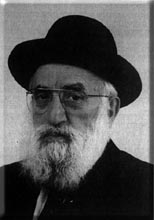Beit Midrash
- Torah Portion and Tanach
- Bereshit
- Chayei Sara
The Torah study is dedicatedto the full recovery of
Inbal bat Alon
However, a second, deeper look shows that the patriarchs did not just act as individuals. Most of their interactions were with monarchs and noblemen of their time, and they often interacted with them as leaders in their own right. Avraham engaged in a long discourse with Paroh in Egypt and emerged with the upper hand (Bereishit 12). Later on he took part in the struggle of nine of the leading kings of the time in a major world war. In its aftermath, he had discussions with the King of S’dom and Malkitzedek, the King of Shalem (Bereishit 14). Avraham continued his "diplomacy" with Avimelech, the King of G’rar. Yitzchak interacted prominently with Avimemlech, King of P’lishtim. Yaakov negotiated with Chamor, "the prince of the land," and in his old age was an honored guest of Paroh, king of the world’s only superpower.
There are signs of nobility in regard to the matriarchs, as well. Just look at their names. Sarah’s name can be translated as "nobility," and her sister as "queen." She is described as the gevira, a term used elsewhere in Tanach for the king’s mother or wife (see Melachim I, 11:19; II, 29:2; Yirmiya 29:2 and more). The midrash tells us that Hagar was the daughter of Paroh, who decided that it was worthwhile for her to serve as a servant in the house of Avraham and Sarah. A lesser-known midrash states that Avimelech likewise sent his daughter to them (Bereishit Rabba 45). The simple reading of the Torah also indicates that Keturah, who married Avraham in his old age, was a princess, whose descendants went on to be princes of different tribes. The fact that Avraham was able to wage war with a force of over 300 soldiers is a sign that his entire entourage must have been in the thousands, as the Rambam (Avodah Zara 1:3) states. Based on all of these indications, we see that when the people of Chet refer to Avraham as a "prince of G-d" in our midst, it was not simply flattery, but a reflection of Avraham’s local and even international status. et us pray that we will merit having leaders who can act as the princes of our past, the righteous patriarchs and matriarchs, did.

Brushstrokes of the Avos
Parashat Chayei Sara
Rabbi Sholom Gold | 5765

Old and Improved
Parashat Chayei Sara
Rabbi Yossef Carmel | 22 Cheshvan 5765
Sarah's Life
Rabbi Berel Wein zt"l | Cheshvan 22 5782





















